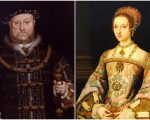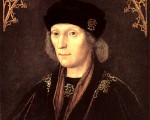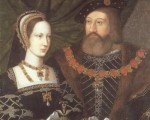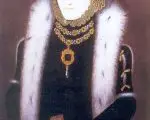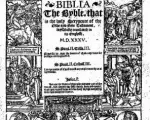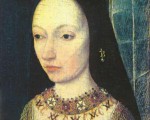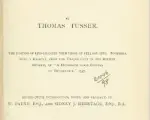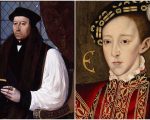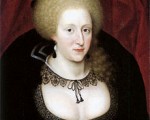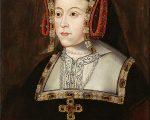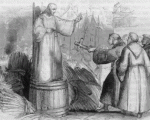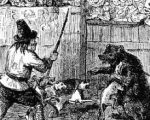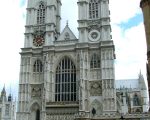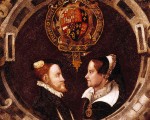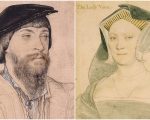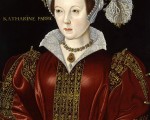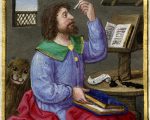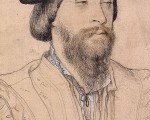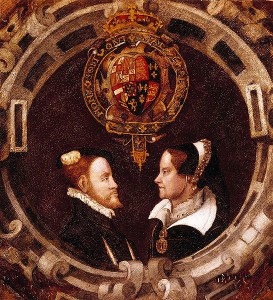
Mary I and Philip of Spain
On this day in history, 25th April 1557, St Mark's Day, "A Masque of Almains, Pilgrims and Irishmen" was performed in front of Queen Mary I and Philip of Spain at Whitehall. In Documents relating to the revels at court in the time of King Edward VI and Queen Mary Albert Feuillerat points out that this masque was to mark King Philip's second visit to England, which lasted from 18th March 1557 to 3rd July 1557.
Here's the warrant for the masque from the Office of Revels:
Mary the quene.
Trustie and welbeloved we grete you well And whereas our welbeloved Sir Thomas Cawerden knight Master of our Revells Tryumphes and Maskes upon our speciall comaundement to him signified by our vizchamberlain dothe shewe and set forthe on Saint Markes daye next cominge to our Regall disport recreacion and comfort a notorious maske of Almaynes pilgrymes and Irishemen with their insidents and accomplishes accordingly And dothe for that purpose lack certayne silks to his fantasie for the better furniture and garnishinge thereof: our pleasure is furthwt. upon the recept of theis our lettres ye delyver or cause to be delyvered more for the same of suche our stuffe remayninge in your charge and custodie theis parcells underwritten vidz of Redde velvett twenty fyve yds / of Carnacion velvet fieftene yds / of purple gold sarcenet nyne yds di di qr . / of yellow sarcenet twenty six yds di di qr. of Redde sarcenet fortye nyne yds di / of whight sarcenet thirtie three yds di di qr . / and of clothe of silver with workes fower yds / And his hand testifeng the recept of theis parcells before written with this our warrant signed shalbe to you a sufficient discharge in that behalfe / Yeoven under our signet at our palayce of Westminster . the last of Aprill in the thirde and fourthe yeres of our Reignes /"
Feuillerat explains "The warrant is also dated April 30, and the masque was shown on April 25, five days before the stuff was officially received by the Revels, but this was not. an uncommon proceeding."
Feillerat goes on to say that there is a description of the garments made in this fabric in Documents Relating to the Office of the Revels in the Time of Queen Elizabeth and gives a reference so I looked it up and found that the red and carnation velvets were "Imployed into viij paire of Sloppes for Allmaynes .3. into the lyninge of viij paire of Sleves and viij plackardes of the same Maske and the welting and Tagging therof 10/ wherof the hosen were translated into torchbearers to the Swarte Rutters and againe the ffissher men and there reste." The "cloth of silver with workes" was used to make "vj Bagges for Pallmers [pilgrims]", the purple gold sarcenet for girldes for the "Pallmers", the yellow sarcenet "imployed into "x of the Irisshe mens Shertes whiche were torchebearers to Allmaynes and pallmers", the red sarcenet "Imployed into the furniture of iiij drommes and fifes & twoo bagge pipes for the mask of Allmaynes polymers and Irisshmen", and the white sarcenet for "in pullinges oute tuftynges tyringes gyrdles garters and garnisshinge of head peces of the said Maske of Allmaynes Pallmers and Irisshe men...".
Another reference he gives describes the outfits of the "Almanes":
"vj Jerkyns of owlde clothe of gowlde with six payre of greate Ruff sleves of redd crimmesem and Carnacion velvet iagged and cutt lyned with yellowe sarsnett frenged with small silver freng.
vj payere of Sloppes of lyke velvett lykewyse pulled owte iagged and Cutt.
vj payere of nether stockes of redd Clothe.
vj rounde hedpeces of owlde Clothe of tyssue with rowles of bace fethers."
It gives you some idea of how these Germans, pilgrims and Irishmen were dressed.
You can find out about other court revels and court masques of the Tudor period in my Claire Chats videos:
Notes and Sources
